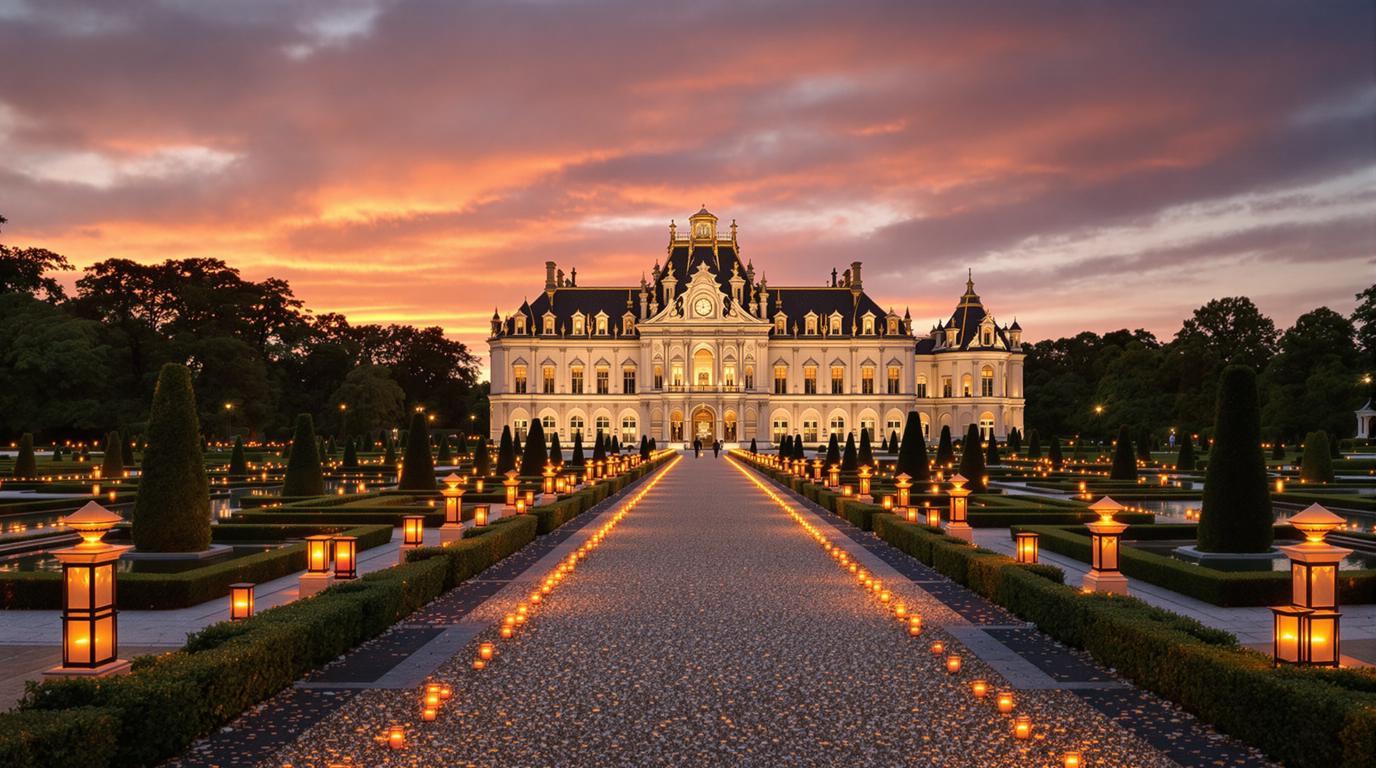Vaux-le-Vicomte: The Magnificent Baroque Estate That Inspired Versailles (And Made Its Owner Too Powerful)
The palace that cost a man everything
Just 35 miles southeast of Paris lies a château so magnificent it sealed its owner’s doom. When Nicolas Fouquet, Louis XIV’s finance minister, unveiled Château de Vaux-le-Vicomte in 1661 with a lavish party, the king became so jealous of its splendor that he promptly arrested Fouquet for embezzlement and commissioned his own grander palace—Versailles. This extraordinary baroque masterpiece in Seine-et-Marne remains one of France’s most spectacular yet overlooked treasures.
A revolutionary collaboration that changed French architecture forever
Vaux-le-Vicomte represents the first time three artistic geniuses—architect Louis Le Vau, painter Charles Le Brun, and landscape designer André Le Nôtre—collaborated on a single project. Their revolutionary design broke from medieval traditions by creating perfect harmony between building and landscape. The château’s double-thick central structure allowed for interconnected rooms rather than stacked chambers, while its sweeping gardens created optical illusions that make the estate appear larger than its actual 1,235 acres.
“This was the birthplace of the jardin à la française—the formal French garden style that would dominate European landscape design for over a century,” explains Ascanio de Vogüé, descendant of the family that saved the château from ruin in 1875.
Gardens that play with perspective and light
Le Nôtre’s gardens remain a masterclass in optical illusion. Walking from the château, the fountains and pools appear to get larger as you move away—the opposite of normal perspective. This trick creates a sensation of the gardens extending infinitely. For a truly magical experience, visit during the candlelit evenings between May and October, when over 2,000 candles illuminate the gardens and château.
The grand salon that rivals Versailles
Step inside the oval Grand Salon, and you’ll understand why Louis XIV coveted this château. Its 17th-century dome rises 18 meters high, decorated with paintings depicting the seasons and elements. Gold leaf accents catch the sunlight streaming through tall windows, while the original marble floors have withstood centuries of footsteps. Unlike the often-crowded halls of Versailles, here you can experience baroque splendor in relative tranquility.
An Easter celebration that delights children and adults alike
Each spring, Vaux-le-Vicomte hosts one of France’s largest Easter egg hunts, hiding thousands of chocolate treasures throughout its formal gardens. Children dressed in period costumes follow clues along the poet-gardener trail, while adults can explore the château’s remarkable carriage museum housed in the former stables.
A winter wonderland that rivals any Christmas market
From mid-November through early January, Le Grand Noël transforms the château into a festive spectacle. The gardens shimmer with thousands of lights, while the interior rooms showcase elaborate holiday decorations. Ice skating on the mirror pool creates a scene worthy of a fairytale, and period-costumed staff serve hot chocolate beside roaring fireplaces—a perfect alternative to warmer getaway destinations.
The underground kitchens where a culinary legend worked
Few visitors discover the vast kitchens where François Vatel, history’s most famous chef, created the elaborate feast that preceded Fouquet’s downfall. These remarkably preserved spaces reveal the inner workings of a 17th-century grand household, from massive hearths to copper pots large enough to feed hundreds. Like hidden canyons waiting to be explored, these kitchens offer fascinating insights into baroque life.
“The kitchens show how everything—even meal preparation—was designed to impress and demonstrate power. Food was political in the 17th century,” notes historian Marie-Claude Châtelet.
A private family’s commitment to preservation
Unlike most French châteaux owned by the state, Vaux-le-Vicomte has been privately maintained by the de Vogüé family since 1875. Their dedication ensures this architectural treasure remains intact while also making it accessible to the public. The family often mingles with visitors, sharing stories about the constant challenges of preserving such a monumental property.
Walking the grounds of Vaux-le-Vicomte feels like stepping into a moment frozen in time—the day when French baroque architecture achieved perfection before being eclipsed by its more famous offspring, Versailles. Like undiscovered island paradises, this magnificent estate offers the rare opportunity to experience a cultural landmark’s glory without the crowds, preserving the magic that once made a king so jealous he had to build something even grander.
